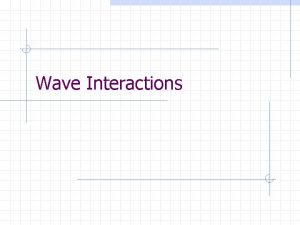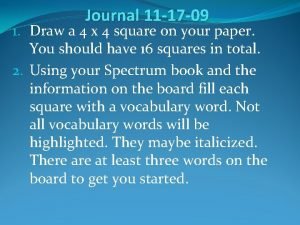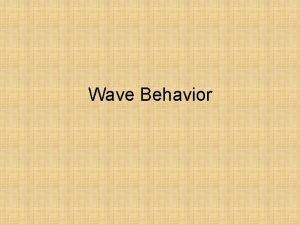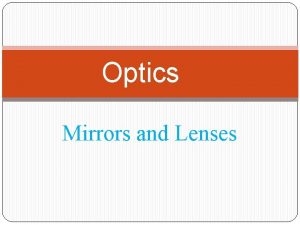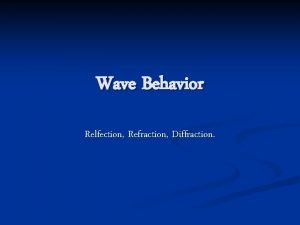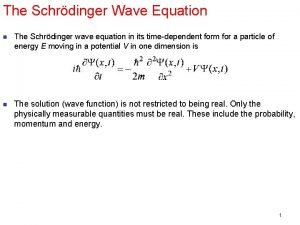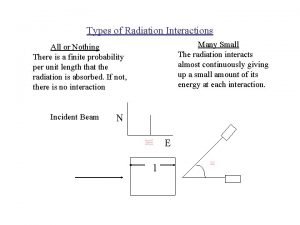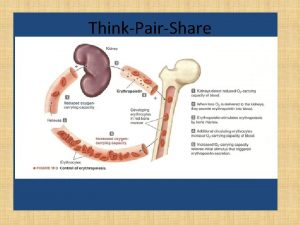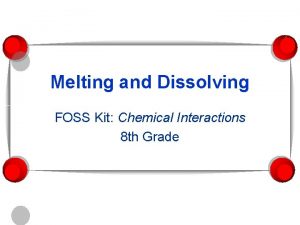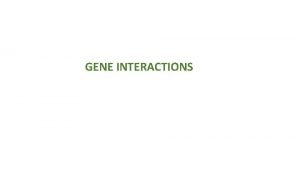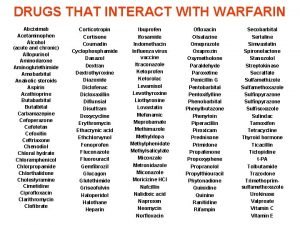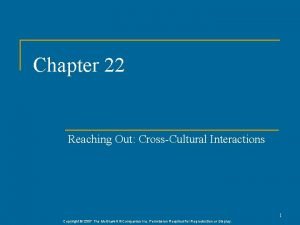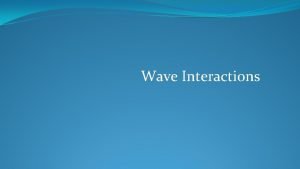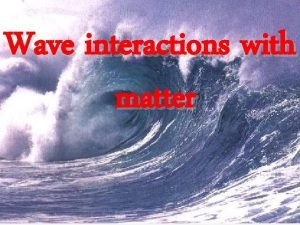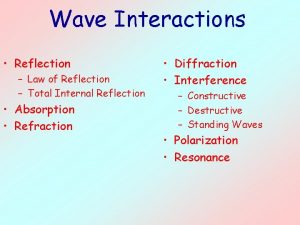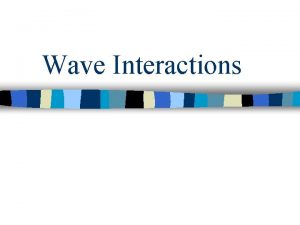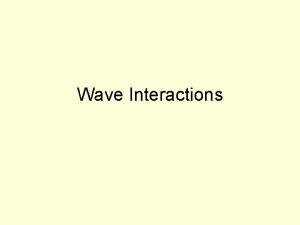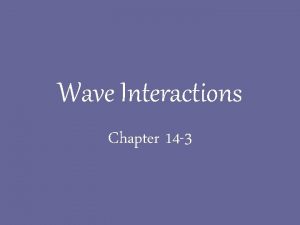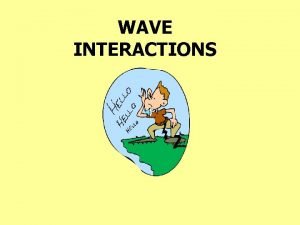Wave Interactions Reflection Reflection happens when a wave














- Slides: 14

Wave Interactions

Reflection • Reflection happens when a wave bounces back after hitting a barrier. • All waves – including light, sound, and water – can be reflected. • When light waves reflect, it allows you to see an object even though it is not actually giving off light. Ex: Moon, planets • When sound waves reflect, it is called an echo

Angle of Reflection

Refraction • The bending of a wave as the wave passes from one medium to another at an angle. • Why? ? ? When a wave moves from one medium to another, the wave’s speed changes. When a wave enters a new medium, the wave changes wavelength as well as speed. This causes the wave to bend and travel in a new direction.


Angle of Refraction

Refraction of Different Colors • When light waves pass through a drop of water or a prism, the light is refracted. • Different colors of light travel at different wavelengths, and are therefore refracted at different amounts. • This causes the light to refract at different angles, dispersing the colors so we can see them individually.

Diffraction • Most waves travel in a straight line. However, some waves bend or curve when they reach the edge of a barrier. • The bending or curving of waves around a barrier or through an opening is Diffraction

Diffraction Gradient • The amount of diffraction depends on the wavelength and the size of the barrier or opening. • Sound waves will travel around a corner because they have a long wavelength so can diffract at a greater angle and bend around corners. • Light has a shorter wavelength so can only bend a small amount • This is why you can hear music being played around a corner but you can’t see who is playing it

Wave Interference • Waves are energy – Not matter • So… unlike matter that takes up space which means objects cannot be in the same space at the same time, More than one wave can be in the same place at the same time. • Two waves can meet, share the same space, and even pass through each other • Wave interference – the combination of 2 or more waves that results in a single wave

Constructive Interference • Occurs when the crests of one wave overlap the crests of another wave(s). The troughs also overlap • When waves combine this way, the energy carried by the waves is also able to combine. • This results in a new wave with a large amplitude than the original waves had.

Destructive Interference • Occurs when the crests of one wave and the troughs of another wave overlap. • The new wave has a smaller amplitude than the original waves had. • If the waves involved have the same amplitude and meet each other at just the right time, the result is no wave at all.

Standing Waves • A pattern of vibration that simulates a wave that is standing still • Certain parts of the wave are always at the rest position because of total destructive interference between all the waves. Other parts have a large amplitude because of constructive interference • The waves are not standing still, but actually going in both directions

Resonance – Standing Waves • The frequencies of standing waves are called “resonant frequencies” • Resonance is when two objects naturally vibrate at the same frequency – the sound produced by one object causes the other object to vibrate. • Ex: Singing in the shower – certain frequencies create standing waves that fill the shower stall. The air resonates – so the amplitude of the sound waves becomes greater causing your voice to sound louder.
 Reflection wave interactions
Reflection wave interactions The maximum distance a wave varies from its rest position
The maximum distance a wave varies from its rest position Wave interactions
Wave interactions When a wave strikes an object and goes into it
When a wave strikes an object and goes into it Diffuse reflection vs regular reflection
Diffuse reflection vs regular reflection Reflection refraction diffraction
Reflection refraction diffraction Wave reflection formula
Wave reflection formula Types of interactions
Types of interactions Interactions in the environment grade 7
Interactions in the environment grade 7 Integumentary interactions with other systems
Integumentary interactions with other systems Foss chemical interactions
Foss chemical interactions Polymeric gene interaction
Polymeric gene interaction Synergism
Synergism Chapter 22 reaching out cross-cultural interactions
Chapter 22 reaching out cross-cultural interactions Congress formal and informal powers
Congress formal and informal powers
